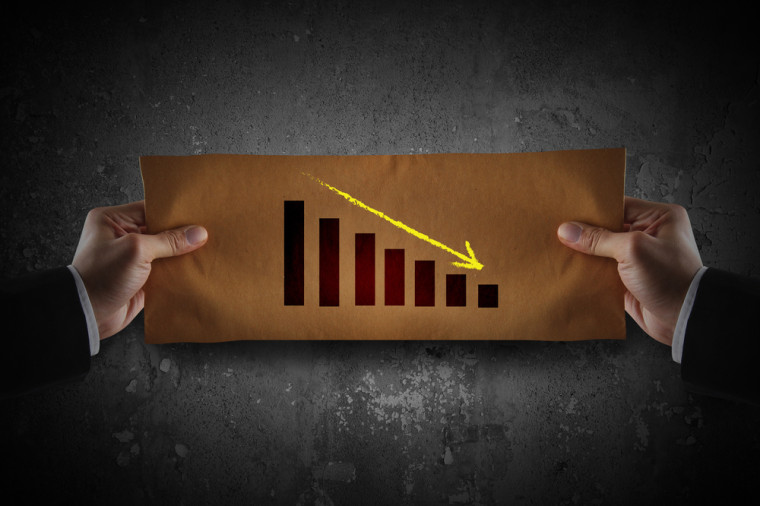“I’d say that, to be a good deal maker, you have to have three basic characteristics – timing, timing, and timing.”
– Richard Armitage
When you are preparing to sell your website, there are a lot of factors which influence your value, but few have as dramatic of an impact as your timing.
To be clear, I’m not talking about websites that are bought one day and sold the next (the “turn ‘em and burn ‘em process), but rather established, profitable websites which are built to be businesses. I am talking about six- and seven-figure websites. When your website becomes this valuable, small changes can make a big difference in actual value when your business is acquired.
If you want maximum profit from selling your site, you need to judge the right time to sell. There are three common mistakes I see people make with regards to timing: 1) they try to sell too soon, 2) they try to sell too late, and 3) they try to sell during a bad trend.
Selling Your Website Too Soon

Before I started selling other people’s websites professionally, I started, grew, and sold my own online business. But like so many other people, I fell into this very trap.
Eight months after I started an online publication and email newsletter, I decided that it was time to move on to different projects, so I called a broker to see what he could do for me. His response was a lesson that I carry with me to this day: “I can sell your website now, but I don’t think you should do that. If you hang on to the business for a year and keep doing what you are doing, it will be worth a lot more.”
It was great advice. Within one year the value of the business grew by six times.
In today’s marketplace, selling a business for six figures or more when it is less than a year old simply doesn’t happen (any occurrences of this would be extreme outliers). You need to let the business run for a minimum 36 months if you want the most money. 24 months should be the minimum amount of time to sell at all.
It’s not that you can’t sell a business younger than this, but you will take a significant hit in its value. Just by turning three years old, a business gains some value.
Why? Because buyers are concerned about the return on their investment, and a business that is younger than three years old has too little history to really make a big bet on its future. Coincidentally (or not?), banks won’t finance an acquisition on a business less than 3 years old, either.
Trying to Sell a Website After It Has Maxed Out Its Potential
On the flip side, some people decide to sell after they have exhausted all of the potential of their business. It’s not that you can’t sell a business that has maxed out its potential, you’ll just take a little less in value for the business.
Why? Because buyer’s are primarily interested in ROI, and a business that has real growth possibilities allows for a stronger ROI.
But this issue really pales in comparison to those who try to sell too soon. Buyers will still buy a business that demonstrates steady earnings. This leads us to the third, and most common mistake: selling during a bad trend.
Trying to Sell a Website When It Is Trending Downward

A downward trending business can be frustrating and depressing. Because of this, many business owners consider selling when their website starts to trend negatively.
The problem is, when your business is trending downward, your value takes a double-hit.
Most businesses are valued based on a multiple of their annual earnings. In other words, Value = Profits x Multiple. For example, if your business earns (profits) $100,000/year, you may be able to get $300,000 for the business (a multiple of ‘3x’).
But when your earnings are declining, not are your earnings less, but buyers are also not willing to pay as high of a multiple. And this is where the ‘double-hit’ impacts your value.
Consider this example. If you had a business that was earning $100,000/year, but now is only earning $80,000, and if you applied that same 3x multiple, you’d only realize $240,000. And this is where the double-hit comes in: because the business is trending downward, you won’t be able to justify that 3x multiple anymore. Instead, you may only be able to get a 2.2x multiple. So you have gone from $300,000 value all the way down to $176,000 (a loss of $124,000 in value). So while the business only lost 20% of its earnings, its value dropped by twice that much, roughly 41%.
Does that seem harsh? It is, but it’s the reality of bad timing.
So What Do You Do If Your Business is Shrinking?
First, do a simple analysis. If your business is trending is down, ask these questions:
- What is causing the business to trend downwards?
- Can I fix it?
- Do I have the energy, will, desire, and fortitude to fix it?
- How long will it take?
- How much investment will it take?
If the problem is fixable, and if you have the energy, the time, and the funds to fix it, then take the steps to implement a fix. Keep in mind that negative trends tend to create lasting damage and create permanent doubt in the minds of potential buyers.
Once you get the trend going back in the right direction, you will need a minimum of 3 months positive trends before buyers believe that the rot has been removed, and often times you’ll need 6-12 months of history. The more history you can show, the better.
Also, be sure you have the energy and the ability to actually fix the problem. We work with a lot of clients who think they have the energy to turn around a negative trend, but find themselves six months later with a business whose value has been decimated.
If you have any doubts about whether you will be able to reverse the negative trend, then this is usually a sign that it is time to sell the website. While you will have to concede that you missed your website’s maximum value, you’ll be able to salvage some value from the business. It is better to get dollars than end up with cents.
Getting That Timing Right
Understanding what makes a website valuable can be a complicated topic to dissect. There are more factors that tend to detract from a website’s value than there are that actually add to the value, and timing is certainly one of these factors that has the ability to hurt your value if you get it wrong.
But common sense can prevail. Understand that most entrepreneurs engage in more than one project during their lives, and your primary website today may not be the project you engage in five years from now. So, take the steps to make sure you are prepared to sell should the need arise.
Image Credits
Featured Image: Rawpixel via Shutterstock
Image #1: kim7 via Shutterstock
Image #2: max sattana via Shutterstock





